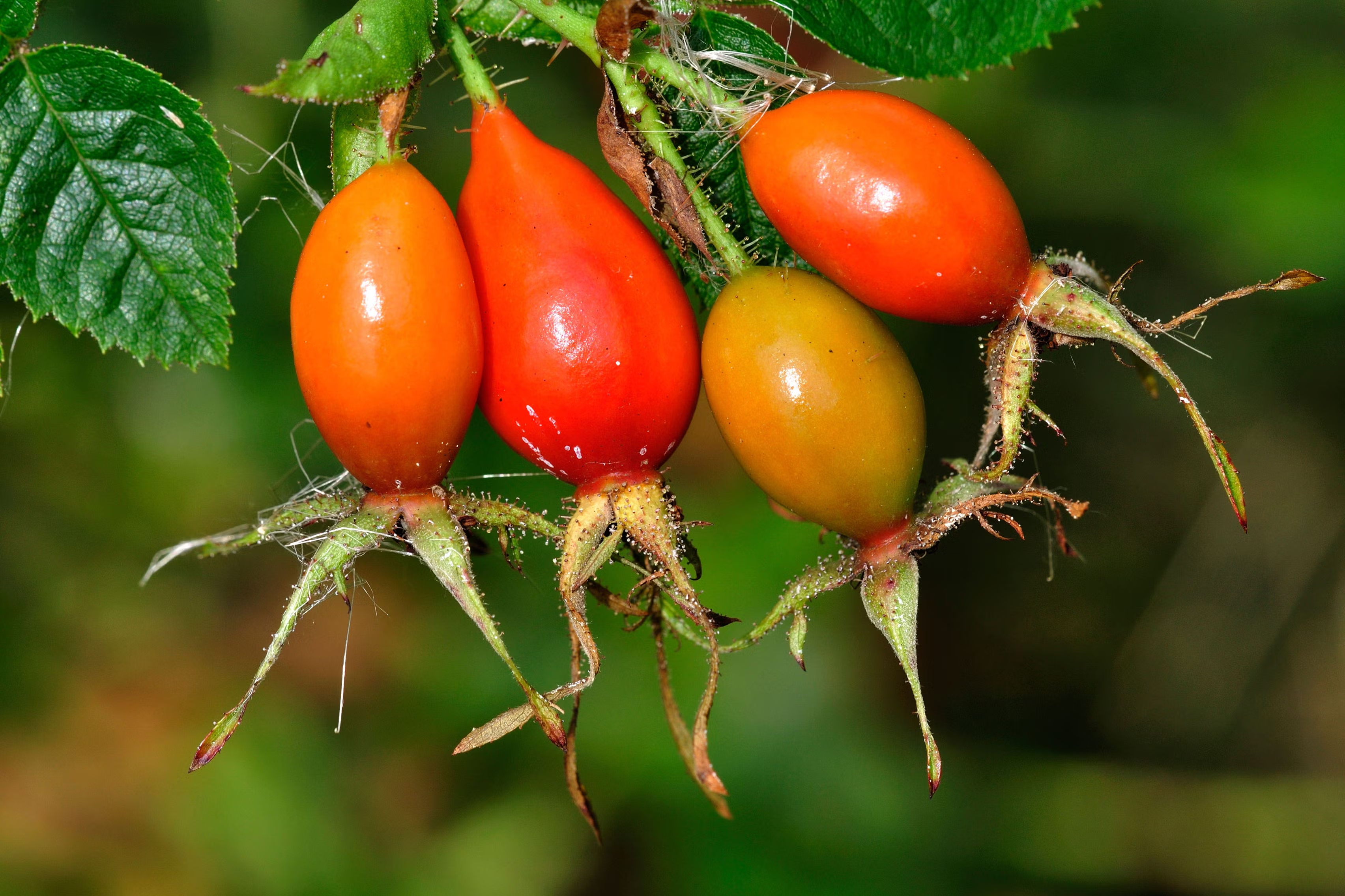Foraging for rosehips, the vibrant fruits of wild roses, has become one of my favorite seasonal activities. These small, round fruits are visually appealing with their bright red or orange colors and packed with nutrients and flavor. Here’s a comprehensive guide to help you identify, prepare, and store rosehips safely.
Identifying Rosehips
When searching for rosehips, keep these key characteristics in mind:
- Shape and Color: Rosehips typically appear small and round to oval, usually in bright red or orange hues. They often grow in clusters after the rose blooms.
- Leaves and Thorns: Wild rose bushes feature serrated leaves and can be thorny, so wearing gloves helps to avoid scratches.
- Harvesting Season: Late summer to early autumn is the best time to forage for rosehips, particularly after the first frost, which enhances their sweetness.

Proper identification of the rose species is essential, as many varieties exist. A reliable foraging guide can assist in confirming the correct species.
Culinary Uses for Rosehips
Rosehips offer incredible versatility and can serve various culinary and medicinal applications:
- Teas: Steeping dried rosehips in hot water creates a refreshing tea rich in vitamin C and is one of my personal favorites.
- Jams and Jellies: Cooked rosehips transform into delicious jams or jellies, often paired with other fruits for added flavor.
- Soups and Sauces: Adding rosehip puree enhances soups or sauces, providing both taste and nutrition.
- Infused Oils or Vinegars: Rosehips can infuse oils or vinegars, adding a fragrant touch to culinary creations.
Preparing Rosehips
- Harvesting: Snip off the rosehips with scissors, leaving a small part of the stem attached. Gloves are essential for protection against thorns.
- Cleaning: Rinse harvested rosehips under cold water to remove dirt and debris, ensuring the removal of any stems and leaves.
- Processing:
- For Tea: Chop or crush the dried hips to release their flavor.
- For Jam: Boil the hips with water, strain out the seeds and skins, and mix the resulting liquid with sugar and pectin to create jam.
- For Infusions: Place dried rosehips in a jar, cover them with oil or vinegar, and let them infuse for a few weeks.
Storing Rosehips
- Drying: Spread cleaned rosehips on a tray in a warm, dry area. Once fully dried, store them in an airtight container away from sunlight.
- Freezing: Freezing is another effective option. Lay cleaned rosehips in a single layer on a baking sheet, freeze them, and then transfer them to a freezer bag for future use.
Safety Tips for Foraging
- Identifying Edible Species: Always confirm that the rose species being foraged is recognized as edible. Avoid areas treated with pesticides or chemicals.
- Handling and Preparation: Although rosehips are generally safe, caution is advisable with the seeds inside, as they can cause gastrointestinal discomfort in large amounts. Cooking or steeping helps mitigate this risk.
- Storage: Aim to use dried rosehips within a year for optimal flavor and nutrition. Always check for signs of mold or spoilage before use (Slow Living Kitchen)(Practical Self Reliance)(Foraging for Wild Edibles).
Conclusion
Foraging for rosehips not only connects you to nature but also allows for the enjoyment of the delicious fruits of your labor. With vibrant flavor and numerous culinary uses, rosehips serve as an excellent addition to any forager’s collection. Always remember to forage responsibly, leaving plenty for wildlife and future harvests.
For additional information about foraging rosehips, check out resources like Eat Weeds or Wild Food Adventures.
